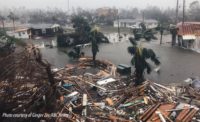Hurricane Ian and other extreme weather events, including winter storms, flooding and hailstorms, resulted in over $260 billion in total economic losses in 2022, making it the second consecutive year in which losses attributed to natural disasters totaled more than $200 billion, and continuing the trend of a 5% to 7% average annual increase over the past decade.
According to findings by Swiss Re Institute, 2022 saw weather-related insured losses of $122 billion and total economic losses of $268 billion. The most economically significant natural disasters of 2022 include:
- Hurricane Ian, a category 4 hurricane that made landfall in western Florida in September, incurring insured losses of $50 to $65 billion.
- A series of winter storms that hit Europe in February, sustaining insured losses of nearly $4 billion.
- Torrential rains that plagued Australia in February and March and created widespread flooding, resulting in $4 billion in damages.
- A number of small-to-medium sized hail and thunderstorms in the U.S., and the most severe series of hailstorms ever seen in France, totaling insured losses of over $5 billion.
“Extreme weather events on every continent have led to high insured losses in 2022, turning extreme weather into ever-rising natural catastrophe losses,” notes Martin Bertogg, Head of Catastrophe Perils at Swiss Re. “When Hurricane Andrew struck 30 years ago, a $20-billion loss event had never occurred before. Now there have been seven such hurricanes in just the past six years.”
While insured and total economic losses were slightly lower in 2022 than the previous year, with weather-related insured losses of $130 billion and total economic losses of $303 billion recorded in 2021, data shows that they are still greater than the previous 10-year average of $90 billion in insured losses and $219 billion in total economic losses associated with natural disasters, according to Swiss Re.
For more information on the report, click here.



